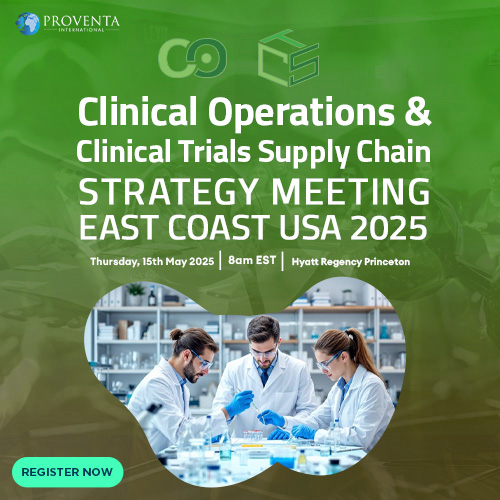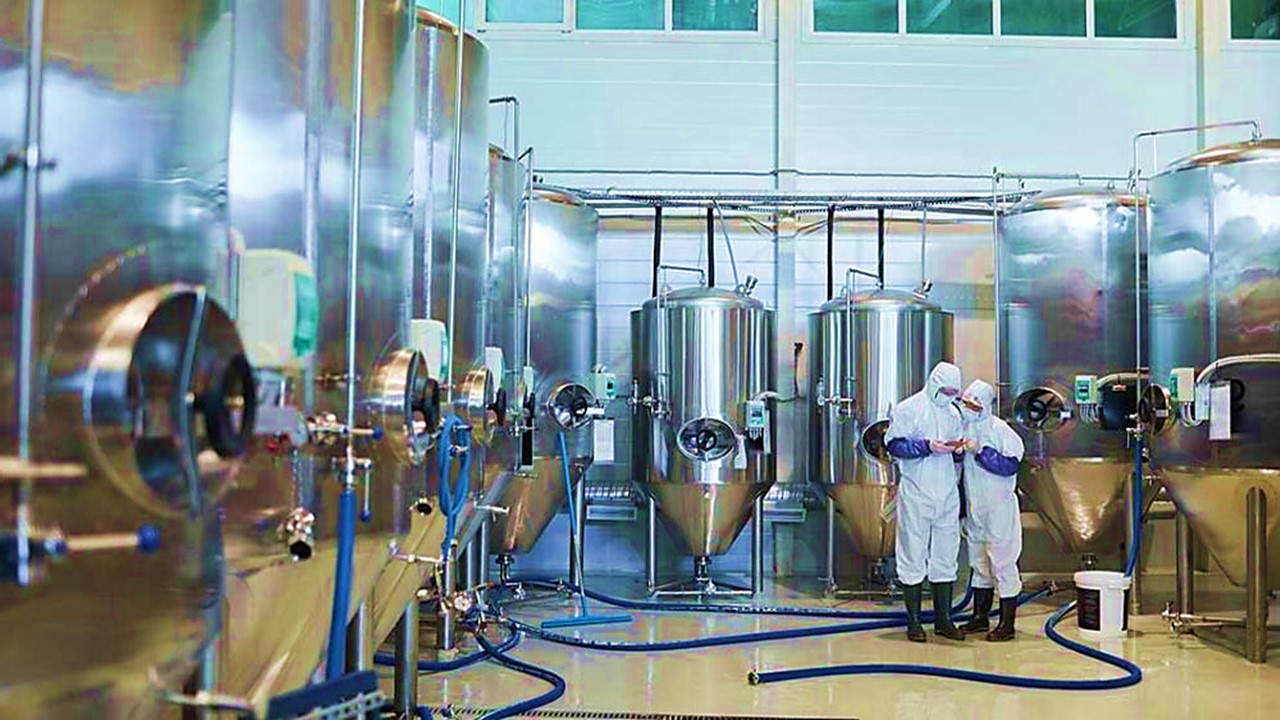The logistics of active pharmaceutical ingredients (APIs) and drug intermediates is a highly intricate and demanding process. In a world where timely and cost-effective delivery is paramount, freight consolidation strategies in multi-modal transportation are emerging as critical tools for optimizing the pharmaceutical supply chain. By employing multi-modal systems, where goods are transferred seamlessly between different transportation methods such as trucks, trains, ships, and airplanes, stakeholders in the pharmaceutical industry can unlock substantial improvements in both efficiency and cost management. The following exploration delves deeply into the intricacies of freight consolidation and how these strategies contribute to an optimized pharmaceutical logistics network, focusing on everything from environmental considerations to the need for meticulous regulatory compliance.
The Complexities of Multi-Modal Transportation in Pharmaceutical Logistics
The pharmaceutical industry’s logistics network is one of the most complex in global trade, largely due to the need for precise temperature control, stringent regulatory requirements, and the sensitive nature of the products being transported. Active pharmaceutical ingredients, drug intermediates, and finished products are often time-sensitive and require a highly coordinated approach across multiple transportation modes. The complexity of moving pharmaceutical goods arises from the variety of potential challenges—ranging from customs delays to risks of contamination and degradation during transit. Multi-modal transportation is used to streamline these logistics by combining the strengths of various transport methods.
In a typical multi-modal system, products are moved through a series of transportation methods, often starting with a local truck shipment before transitioning to a rail or sea transport for longer distances. The key advantage here is that each transport mode has its strengths—road transport for flexibility and door-to-door service, rail for cost-effective bulk transport, air for rapid delivery, and sea for large-scale shipments. The consolidated freight approach, by combining these different transport methods, ensures that pharmaceutical shipments are moved efficiently and cost-effectively, reducing delays that could lead to costly disruptions in the production and distribution cycles. The main challenge, however, lies in the optimization of scheduling, ensuring that each phase of the journey is properly synchronized.
Strategic freight consolidation focuses on minimizing the number of shipments required for the same amount of product. This reduces the total transport cost and mitigates environmental impact by maximizing cargo capacity. Consolidation also minimizes the risks associated with underutilized freight resources. This requires extensive coordination between logistics providers, regulatory agencies, and the manufacturers to ensure that the correct procedures are followed at each phase of transport. Effective consolidation can also reduce the environmental footprint of pharmaceutical shipments by ensuring that the transportation infrastructure is used efficiently.
The regulatory environment further complicates pharmaceutical transport. The drug industry faces some of the strictest compliance measures when it comes to shipping, including temperature controls, traceability requirements, and verification processes. Freight consolidation in this context involves not only physical consolidation of shipments but also ensuring that all legal and safety standards are met, especially when crossing borders or changing transport modes. The successful integration of multi-modal transport methods in the pharmaceutical sector hinges on meeting these regulatory challenges while ensuring that the supply chain remains agile.
Freight Consolidation: A Strategic Approach to Cost Management
Cost efficiency is one of the primary motivations for employing freight consolidation strategies, particularly in the pharmaceutical sector, where margins can be razor-thin. With the rising costs of raw materials, production, and regulatory compliance, consolidating shipments enables pharmaceutical companies to reduce the overall cost of transportation by minimizing unnecessary shipments. By grouping smaller shipments together into larger, more efficient loads, freight consolidation reduces per-unit transport costs, leading to substantial savings over time. This is especially crucial for the transport of APIs, which are often shipped in relatively small volumes due to their high value.
Moreover, by consolidating shipments, pharmaceutical companies can take advantage of bulk shipping rates that are unavailable for smaller, individual shipments. These economies of scale apply not only to transportation costs but also to packaging and insurance. The combined effect of lower shipping costs, reduced packaging expenses, and cheaper insurance rates means that consolidation strategies can deliver substantial savings for pharmaceutical firms operating in a highly competitive market. The cost reductions are often passed down to the consumer, improving the affordability and accessibility of critical medications.
However, effective freight consolidation requires careful planning and a sophisticated understanding of both logistics and market dynamics. While consolidation can provide substantial savings, poorly managed consolidation efforts can lead to delays and increased costs. A well-implemented system of consolidation takes into account the precise timing of shipments, the balance between shipment volumes and available capacity, and the careful coordination between different modes of transportation. It also necessitates a detailed understanding of the markets involved and the ability to forecast shipping demands accurately.
One key aspect of cost-effective consolidation is the ability to dynamically adjust shipment schedules. As demand for APIs fluctuates, the pharmaceutical logistics system must remain flexible. Advanced forecasting tools and real-time tracking technologies allow logistics providers to monitor the movement of goods across the supply chain and adjust schedules accordingly. This reduces the risks associated with last-minute adjustments, which can lead to higher costs due to urgent shipping requirements or the need for expedited transport.
The role of digital tools in freight consolidation is paramount. Through the use of advanced software and data analytics, logistics providers can optimize the consolidation process by predicting shipment volumes and determining the most efficient routes and transportation methods. This makes the consolidation process not only more efficient but also more flexible, allowing pharmaceutical companies to respond rapidly to changing market demands while keeping costs in check.
Managing Risk and Ensuring Product Integrity in Transit
In the pharmaceutical industry, the integrity of the product during transport is paramount. APIs and drug intermediates are often sensitive to temperature fluctuations, humidity, and even light exposure, meaning that freight consolidation strategies must factor in stringent environmental controls. Multi-modal transportation offers significant advantages in this regard, as modern technologies allow for continuous monitoring of environmental conditions throughout the entire supply chain. Real-time temperature tracking, humidity control, and data logging devices have made it easier than ever to maintain optimal storage conditions during transit, ensuring that the products arrive in a usable state.
The risk of contamination is also a critical concern, particularly when switching between different modes of transport. Freight consolidation helps mitigate this by grouping compatible products together, reducing the number of exposure points and lowering the potential for cross-contamination. Additionally, the practice of containerization—where products are sealed in secure, tamper-evident containers—provides an added layer of protection. These containers ensure that the integrity of pharmaceutical shipments is maintained during their journey, whether they are on land, sea, or in the air.
However, even with the best technologies, risks can never be entirely eliminated. Freight consolidation involves balancing the need for speed and cost with the necessity of maintaining the highest standards of safety and quality. In some instances, the need for rapid delivery may force compromises on consolidation schedules, potentially risking the quality of the product. The challenge, then, lies in striking the right balance between speed, cost, and product safety. Advanced modeling tools that predict and simulate risks, combined with robust insurance policies, help mitigate these concerns.
Additionally, pharmaceutical manufacturers and logistics providers must remain vigilant about regulatory compliance throughout the consolidation process. Depending on the region, certain requirements may need to be met when consolidating shipments of APIs or drug intermediates. These may include specific documentation, labeling, and security measures that must be in place to ensure that the products are not only safe but also compliant with local regulations. This can be particularly challenging in cross-border shipments, where differing standards and protocols may apply.
A modern, consolidated logistics system must integrate all these safety measures into one seamless framework. By using automated alerts and advanced monitoring systems, supply chain managers can proactively address potential risks before they escalate into serious problems. The integration of artificial intelligence and machine learning technologies can further enhance the ability to predict and prevent disruptions, providing an extra layer of protection against unforeseen events.
The Environmental Impacts of Freight Consolidation
As environmental concerns become more pressing across all sectors, the pharmaceutical industry is increasingly adopting sustainable practices in its logistics operations. Freight consolidation strategies present a unique opportunity to reduce the environmental impact of pharmaceutical transportation. By consolidating multiple smaller shipments into fewer larger shipments, the number of vehicles and the frequency of transportation are reduced, leading to a decrease in carbon emissions. This makes consolidation an effective tool for pharmaceutical companies seeking to minimize their ecological footprint while maintaining supply chain efficiency.
Additionally, multi-modal transportation offers specific environmental benefits. For example, shifting freight from trucks to rail or sea transport, both of which are more energy-efficient per unit of cargo, can significantly reduce overall emissions. The rise of electric trucks and ships, as well as the growing adoption of alternative fuels, further enhances the sustainability of these transportation methods. By optimizing freight routes and using the most environmentally friendly modes of transport, pharmaceutical companies can achieve both cost savings and environmental benefits.
While freight consolidation strategies are a step in the right direction, they also require careful planning to ensure that environmental goals are met without compromising other aspects of the supply chain. Logistics companies must invest in the latest green technologies and integrate them into their transportation infrastructure. Additionally, data-driven solutions can be employed to optimize route planning, further reducing fuel consumption and emissions. For example, predictive analytics can help identify the most energy-efficient routes, avoiding congested areas and minimizing detours.
The sustainability of pharmaceutical transportation goes beyond just carbon emissions. Freight consolidation also reduces waste in packaging, as larger shipments tend to require less packaging material. This reduction in packaging waste is not only beneficial for the environment but also helps pharmaceutical companies meet increasingly stringent environmental regulations. Moreover, the consolidation of shipments allows for better utilization of storage space, reducing the overall energy requirements for warehousing.
Finally, the push for sustainability within the pharmaceutical logistics network is part of a broader industry trend towards greener supply chains. Many pharmaceutical companies are now setting ambitious sustainability goals, aiming for carbon-neutral operations and reduced resource consumption. Freight consolidation is one of the most effective strategies for achieving these goals, and its importance will only continue to grow as environmental regulations become stricter and consumer demand for sustainable practices increases.
Integration of Digital Technologies in Freight Consolidation
In today’s fast-paced world, digital transformation is playing a key role in shaping the future of pharmaceutical logistics. The integration of digital technologies such as the Internet of Things (IoT), blockchain, and artificial intelligence (AI) is making freight consolidation processes more efficient, transparent, and secure. These technologies provide pharmaceutical companies with the tools needed to manage their complex supply chains, track shipments in real-time, and ensure that products are delivered under the best possible conditions.
IoT devices are central to this digital transformation, enabling continuous monitoring of temperature, humidity, and location throughout the entire transportation journey. Real-time data collection ensures that any deviations from ideal conditions can be addressed immediately, preventing costly spoilage or delays. The integration of AI in these systems enhances decision-making capabilities, allowing logistics managers to optimize routes, predict potential disruptions, and dynamically adjust shipping schedules based on demand forecasts.
Blockchain technology adds an additional layer of security and transparency to the pharmaceutical supply chain. By creating a secure, tamper-proof record of every transaction, blockchain ensures the traceability of pharmaceutical products from the moment they leave the manufacturing plant until they reach their final destination. This is particularly important in the pharmaceutical industry, where product integrity and regulatory compliance are paramount. Blockchain helps to reduce fraud, prevent counterfeiting, and ensure that all parties in the supply chain are held accountable.
The use of data analytics further complements these technologies by providing valuable insights into shipping performance. By analyzing past shipment data, logistics providers can identify patterns and trends that help optimize future consolidation strategies. Predictive analytics can be used to anticipate demand spikes and adjust consolidation efforts accordingly, ensuring that pharmaceutical shipments are always delivered on time and within budget.
These digital technologies are not only improving efficiency and cost-effectiveness but also helping pharmaceutical companies become more adaptable to changing market conditions. As the industry continues to embrace these technologies, freight consolidation will become an increasingly streamlined process, allowing for better coordination across the supply chain while maintaining product integrity and reducing environmental impact.
Navigating Regulatory Challenges in Pharmaceutical Freight Consolidation
The movement of pharmaceutical goods is heavily regulated, and these regulations are even more stringent when it comes to multi-modal transportation. Ensuring compliance with international, regional, and national standards is crucial for maintaining the integrity of the products and avoiding costly penalties or delays. Freight consolidation strategies must therefore be designed with a keen understanding of the regulatory environment and the requirements that apply to pharmaceutical shipments.
Compliance extends to a wide range of issues, including temperature control, labeling, documentation, and security. For instance, APIs and drug intermediates often require specialized packaging to maintain their stability during transit. Furthermore, each transportation mode has its own set of compliance requirements—what works for road transport may not be acceptable for air freight. Freight consolidation must ensure that all of these regulations are met across different transport legs, without creating unnecessary delays or increasing the risk of non-compliance.
Customs requirements also play a significant role in the pharmaceutical transport process, especially when crossing borders. Freight consolidation strategies must take into account the specific customs protocols that apply to pharmaceutical goods, including the necessary documentation and inspections. Failure to meet these requirements can result in significant delays and fines, which can be detrimental to the timely delivery of products.
With global trade increasing, navigating the complexities of international freight regulations becomes even more challenging. Pharmaceutical companies must work closely with logistics providers and regulatory bodies to ensure compliance with all legal requirements. This can often involve extensive paperwork, certifications, and audits, which add to the cost and complexity of multi-modal transportation.
In light of these challenges, many pharmaceutical companies are turning to specialized logistics providers with expertise in regulatory compliance. These providers are well-versed in the intricacies of pharmaceutical logistics and can help ensure that all shipments are compliant with the relevant regulations. Their knowledge and experience in navigating the regulatory landscape can be invaluable in ensuring the smooth operation of a consolidated freight network.
Leveraging Sustainability in Freight Consolidation
The importance of sustainability in the pharmaceutical supply chain cannot be overstated. The industry is under increasing pressure to reduce its environmental impact, particularly as it relates to transportation, one of the largest contributors to greenhouse gas emissions. Freight consolidation is an essential strategy for addressing these concerns, as it allows companies to reduce the total number of shipments, minimize fuel consumption, and decrease the carbon footprint of their logistics operations.
By consolidating smaller shipments into larger ones, pharmaceutical companies can optimize their transportation routes and reduce the number of vehicles on the road, leading to a direct reduction in emissions. Additionally, multi-modal transport options like rail and sea, which are more energy-efficient than road and air transport, can further reduce the overall environmental impact of pharmaceutical logistics. The shift towards sustainable transport options is not only beneficial for the environment but also aligns with the growing consumer demand for more eco-conscious business practices.
Furthermore, freight consolidation can reduce packaging waste by maximizing the use of available space within containers and transport vehicles. With fewer shipments to manage, there is less need for excessive packaging materials, further contributing to sustainability efforts. By integrating sustainability into their logistics strategies, pharmaceutical companies can improve their environmental credentials while simultaneously lowering costs and improving efficiency.
In addition to direct environmental benefits, sustainable freight consolidation can also improve a company’s reputation. As consumers and healthcare providers alike become more concerned with sustainability, companies that demonstrate a commitment to reducing their environmental impact can gain a competitive edge. This is especially important in the pharmaceutical industry, where public trust is paramount.
The continued focus on sustainability in pharmaceutical logistics will require ongoing innovation. Advances in fuel-efficient technologies, alternative energy sources, and eco-friendly packaging will all play a role in making freight consolidation even more sustainable. As these technologies become more mainstream, pharmaceutical companies will have even greater opportunities to improve their environmental performance while delivering life-saving drugs to those who need them most.
The Future of Freight Consolidation in Pharmaceutical Logistics
As the pharmaceutical industry continues to evolve, so too will the strategies employed for freight consolidation. With advancements in technology and an increasing focus on sustainability, the future of pharmaceutical logistics looks set to become more efficient, more transparent, and more environmentally friendly. The integration of cutting-edge technologies like AI, machine learning, and blockchain will drive further optimization in freight consolidation, allowing for smarter decision-making and improved coordination across the supply chain.
The industry is also likely to see further consolidation of its logistics providers, with larger, more integrated firms capable of offering end-to-end solutions for pharmaceutical transport. These providers will be able to leverage their scale to offer even more competitive pricing and better service levels, further driving down costs and improving service quality for pharmaceutical companies.
Moreover, as global supply chains become more interconnected, the need for seamless coordination between various stakeholders—manufacturers, logistics providers, regulatory bodies, and customers—will become more pronounced. Freight consolidation, supported by digital platforms and advanced forecasting tools, will be essential in ensuring that pharmaceutical products reach their destinations on time and in perfect condition.
Looking ahead, it is clear that multi-modal freight consolidation will remain at the heart of the pharmaceutical logistics strategy. As the industry adapts to changing market dynamics and environmental pressures, the integration of these strategies will continue to evolve, driven by the need for greater efficiency, sustainability, and regulatory compliance. The pharmaceutical industry, ever at the cutting edge of technology and innovation, will undoubtedly continue to find new ways to optimize freight consolidation, ensuring that critical drugs are delivered safely, cost-effectively, and sustainably.
Engr. Dex Marco Tiu Guibelondo, B.Sc. Pharm, R.Ph., B.Sc. CpE
Editor-in-Chief, PharmaFEATURES

Subscribe
to get our
LATEST NEWS
Related Posts

Manufacturing & Logistics
Inventaria Optima: Optimizing Biotech and Pharmaceutical Inventory Control Under Demand Substitution
Managing inventory in the biotech and pharmaceutical industries is uniquely complex due to demand substitution.

Manufacturing & Logistics
Molecular Economics: The Precision Art of Lot-Sizing in Drug Discovery Supply Chains
Unlike bulk pharmaceutical manufacturing with its predictable campaigns, early-stage drug discovery operates in a landscape of radical uncertainty.
Read More Articles
Pathogenic Targeting 5.0: The Rise of RNA Therapeutics and Peptide-Based Drugs in Modern Medicine
Unlike traditional small-molecule drugs, which interact with proteins, RNA therapies modulate gene expression directly, enabling interventions at the root of disease.
Chemical Gale: How Wind Energy is Reshaping Industrial Manufacturing
The integration of wind energy into chemical manufacturing constitutes a fundamental reimagining of process chemistry.
Algorithmic Trials: How Decision Theory is Reshaping Decentralized Clinical Research
Decision theory offers a robust mathematical framework to design trials that enhance efficiency, uphold ethical standards, and better reflect the complexities of real-world therapeutic contexts.













